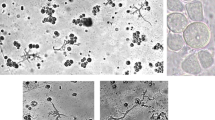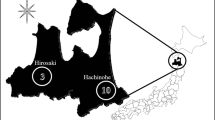Abstract
Balamuthia mandrillaris is an opportunistic free-living amoebae (FLA) which has been reported as the causative agent of the fatal Balamuthia amoebic encephalitis (BAE). Currently, the transmission dynamics of this pathogen remain poorly understood although the organism has been associated with soils, and thus, soil exposure has been identified as a risk factor for this pathogenic amoeba. Nevertheless, environmental isolation of B. mandrillaris is a rare event and strains of this amoebic species have been isolated from soil and dust sources only in seven previous reports (Iran, Mexico, USA, Peru, Costa Rica, Guinea Bissau, and Jamaica). In Iran, a previous study reported the isolation of B. mandrillaris from dust collected in the city of Tehran and free of known infectious involvement. Therefore, in this work, 55 soil samples collected from public and recreational areas of East Azerbaijan, North-Western Iran, were investigated for the presence of this pathogen. Samples were cultured in 2 % non-nutrient agar plates and were monitored for the presence of B. mandrillaris-like trophozoites and/or cysts. Those samples that were positive for these amoebae by microscopic criteria were then confirmed by PCR amplification and DNA sequencing of the mitochondrial 16S ribosomal DNA (rDNA) of B. mandrillaris. The obtained results revealed the presence of this emerging pathogen in 5 of 55 samples included in the study. Homology analysis of the obtained DNA sequences revealed high similarity with previously isolated strains from clinical and environmental sources. To the best of our knowledge, this is the first report on the isolation of B. mandrillaris from soil sources in Iran related to human activity and the second time that this pathogen is isolated from the environment in this country.

Similar content being viewed by others
References
Badirzadeh A, Niyyati M, Babaei Z, Amini H, Badirzadeh H, Rezaeian M (2011) Isolation of free-living amoebae from sarein hot springs in Ardebil Province. Iranian J Parasitol 6:1–8
Baquero RA, Reyes-Batlle M, Nicola GG, Martín-Navarro CM, López-Arencibia A, Guillermo Esteban J, Valladares B, Martínez-Carretero E, Piñero JE, Lorenzo-Morales J (2014) Presence of potentially pathogenic free-living amoebae strains from well water samples in Guinea-Bissau. Pathog Glob Health Jun 108:206–211
Booton GC, Carmichael JR, Visvesvara GS, Byers TJ, Fuerst PA (2003) Identification of Balamuthia mandrillaris by PCR assay using the mitochondrial 16S rRNA gene as a target. J Clin Microbiol 41:453–455
Bravo FG, Seas C (2012) Balamuthia mandrillaris amoebic encephalitis: an emerging parasitic infection. Curr Infect Dis Rep 14:391–396
Cabello-Vílchez AM, Rodríguez-Zaragoza S, Piñero J, Valladares B, Lorenzo-Morales J (2014) Balamuthia mandrillaris in South America: an emerging potential hidden pathogen in Perú. Exp Parasitol 145:S10–19
Diaz JH (2011) The public health threat from Balamuthia mandrillaris in the southern United States. J La State Med Soc 163(4):197–204
Dunnebacke TH, Schuster FL, Yagi S, Booton GC (2003) Isolation of Balamuthia amebas from the environment. J Eukaryot Microbiol 50:510–511
Jackson BR, Kucerova Z, Roy SL, Aguirre G, Weiss J, Sriram R, Yoder J, Foelber R, Baty S, Derado G, Stramer SL, Winkelman V, Visvesvara GS (2014) Serologic survey for exposure following fatal Balamuthia mandrillaris infection. Parasitol Res 113:1305–1311
Lares-Jiménez LF, Booton GC, Lares-Villa F, Velázquez-Contreras CA, Fuerst PA (2014) Genetic analysis among environmental strains of Balamuthia mandrillaris recovered from an artificial lagoon and from soil in Sonora, Mexico. Exp Parasitol 145:S57–61
Lobo SA, Patil K, Jain S, Marks S, Visvesvara GS, Tenner M, Braun A, Wang G, El Khoury MY (2013) Diagnostic challenges in Balamuthia mandrillaris infections. Parasitol Res 112(12):4015–4019
Lorenzo-Morales J, Cabello-Vílchez AM, Martín-Navarro CM, Martínez-Carretero E, Piñero JE, Valladares B (2013) Is Balamuthia mandrillaris a public health concern worldwide? Trends Parasitol 29:483–488
Maciver SK (2007) The threat from Balamuthia mandrillaris. J Med Microbiol 56:1–3
Matin A, Siddiqui R, Jayasekera S, Khan NA (2008) Increasing importance of Balamuthia mandrillaris. Clin Microbiol Rev 21:435–448
Niyyati M, Lorenzo-Morales J, Rezaeian M, Carmen M, Martin-Navarro, Motevalli Haghi A, Sutherland K, Maciver, Valladares B (2009) Isolation of Balamuthia mandrillaris from urban dust, free of known infectious involvement. Parasitol Res 106:279-281
Niyyati M, Rezaeian M (2015) Current status of Acanthamoeba in Iran: a narrative review article. Iran J Parasitol 10(2):157–163
Niyyati M, Lasgerdi Z, Lorenzo-Morales J (2015) Detection and molecular characterization of potentially pathogenic free-living amoebae from water sources in Kish Island, Southern Iran. Microbiol Insights 8:1–6
Retana-Moreira L, Abrahams-Sandí E, Cabello-Vílchez AM, Reyes-Batlle M, Valladares B, Martínez-Carretero E, Piñero JE, Lorenzo-Morales J (2014) Isolation and molecular characterization of Acanthamoeba and Balamuthia mandrillaris from combination shower units in Costa Rica. Parasitol Res 113(11):4117–4122
Roy SL, Atkins JT, Gennuso R, Kofos D, Sriram RR, Dorlo TP, Hayes T, Qvarnstrom Y, Kucerova Z, Guglielmo BJ, Visvesvara GS (2015) Assessment of blood-brain barrier penetration of miltefosine used to treat a fatal case of granulomatous amebic encephalitis possibly caused by an unusual Balamuthia mandrillaris strain. Parasitol Res Sep [Epub ahead of print]
Schuster FL, Glaser C, Gilliam S, Visvesvara GS (2001) Survey of sera from encephalitis patients for Balamuthia mandrillaris antibody. J Eukaryot Microbiol 10S–12S
Schuster FL, Dunnebacke TH, Booton GC, Yagi S, Kohlmeier CK, Glaser C, Vugia D, Bakardjiev A, Azimi P, Maddux-Gonzalez M, Martinez AJ, Visvesvara GS (2003) Environmental isolation of Balamuthia mandrillaris associated with a case of amebic encephalitis. J Clin Microbiol 41:3175–3180
Scheid P, Zöller L, Pressmar S, Richard G, Michel R (2008) An extraordinary endocytobiont in Acanthamoeba sp. isolated from a patient with keratitis. Parasitol Res 102(5):945–950
Todd CD, Reyes-Batlle M, Piñero JE, Martínez-Carretero E, Valladares B, Lindo JF, Lorenzo-Morales J (2015) Balamuthia mandrillaris therapeutic mud bath in Jamaica. Epidemiol Infect 143:2245–2248
Visvesvara GS, Martinez AJ, Schuster FL, Leitch GJ, Wallace SV, Sawyer TK, Anderson M (1990) Leptomyxid ameba, a new agent of amebic meningoencephalitis in humans and animals. J Clin Microbiol 28:2750–2756
Visvesvara GS, Schuster FL, Martinez AJ (1993) Balamuthia mandrillaris n. g. n. sp., agent of amebic meningoencephalitis in humans and other animals. J Eukaryot Microbiol 40:504–14
Yousuf FA, Siddiqui R, Subhani F, Khan NA (2013) Status of free-living amoebae (Acanthamoeba spp., Naegleria fowleri, Balamuthia mandrillaris) in drinking water supplies in Karachi, Pakistan. J Water Health 11:371–375
Acknowledgments
This study was funded by Shahid Beheshti University of Medical Sciences, Tehran, Iran. This work was also supported by the grants RICET (project no. RD12/0018/0012 of the programme of Redes Temáticas de Investigación Cooperativa, FIS), Spanish Ministry of Health, Madrid, Spain, and the Project FIS PI13/00490 “Protozoosis Emergentes por Amebas de Vida Libre: Aislamiento, Caracterización, Nuevas Aproximaciones Terapéuticas y Traslación Clínica de los Resultados” from the Instituto de Salud Carlos III and Project ref. AGUA3 “Amebas de Vida Libre como Marcadores de Calidad del Agua” from CajaCanarias Fundación. JLM was supported by the Ramón y Cajal Subprogramme from the Spanish Ministry of Economy and Competivity RYC-2011-08863.
Author information
Authors and Affiliations
Corresponding author
Rights and permissions
About this article
Cite this article
Niyyati, M., Karamati, S.A., Lorenzo Morales, J. et al. Isolation of Balamuthia mandrillaris from soil samples in North-Western Iran. Parasitol Res 115, 541–545 (2016). https://doi.org/10.1007/s00436-015-4770-y
Received:
Accepted:
Published:
Issue Date:
DOI: https://doi.org/10.1007/s00436-015-4770-y




